The Importance of Proper Footwear in Nursing: Shoes for Comfort and Safety
Nurses play a crucial role in healthcare settings, with their responsibilities ranging from direct patient care to administrative tasks. With long hours on their feet and frequent movements between various departments, it’s no surprise that proper footwear is an essential aspect for their overall well-being and job performance. This article explores the importance of selecting the right shoes for nursing professionals, considering factors like comfort, safety, and practicality.
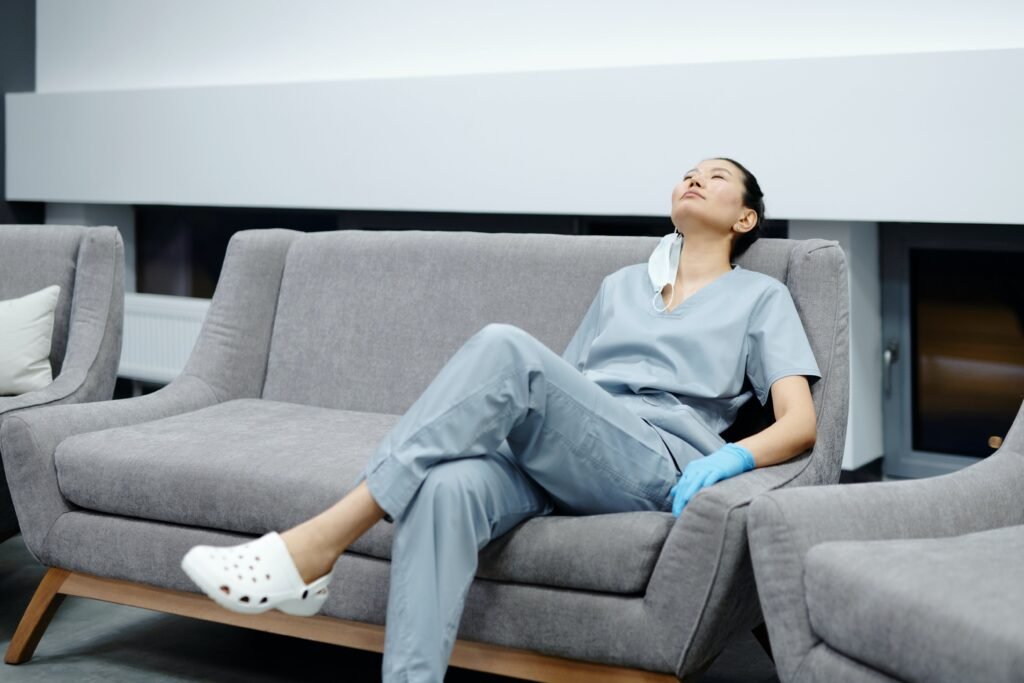
A nurse’s shoes not only provide comfort during their shift but also ensure safety and support while performing various tasks. Hospital surfaces can be slippery or uneven, posing the risk of falls or injuries. Hence, investing in high-quality, slip-resistant footwear is crucial for avoiding dangerous situations. Additionally, adequate cushioning and arch support in shoes can help prevent and alleviate common foot problems like plantar fasciitis and lower back pain, leading to increased comfort during long shifts.
When selecting the ideal pair of shoes, nurses should also consider other practical features, such as lightweight materials for easier movement, and easy-to-clean uppers, which maintain a professional appearance despite potential exposure to fluids and spills. Ultimately, proper footwear is essential for nursing professionals to maintain their health, provide efficient patient care, and ensure safety within healthcare environments.
Significance of Footwear in Nursing
Impact on Health and Safety
The importance of proper footwear in the nursing profession cannot be overstated. As nurses spend long hours on their feet, often walking and standing for extended periods, the right shoes can make a significant difference in their overall health and safety. Unsuitable footwear may lead to a variety of problems, such as foot and leg pain, injuries, and even long-term conditions like plantar fasciitis.
Key Aspects of Suitable Footwear:
- Cushioning: Adequate cushioning helps to absorb shock and reduce pressure on the feet.
- Arch Support: Proper arch support prevents foot pain and discomfort, particularly for those with existing conditions like flat feet or high arches.
- Slip Resistance: Slip-resistant soles are essential for preventing falls and injuries in the often-wet environments nurses work in.
- Breathability: Breathable materials help to keep feet dry and prevent the growth of bacteria or fungi.
Correlation with Performance
Besides health and safety concerns, there is also a strong correlation between proper footwear and nursing performance. Comfortable, supportive shoes can help reduce fatigue, increase energy levels, and improve overall job satisfaction.
| Factors | Benefits in Nursing Performance |
|---|---|
| Reduced Fatigue | More stamina for long shifts and enhanced ability to focus on patients’ needs. |
| Greater Comfort | Improved mood and reduced irritability, leading to better patient care and interpersonal relations. |
| Enhanced Mobility | Increased speed and agility for quick response to emergencies and frequent patient visits. |
In light of these factors, it is crucial for nursing professionals to invest in high-quality footwear that provides optimal comfort, support, and safety. This will not only minimize potential health risks but also contribute to better productivity and job satisfaction for nurses.
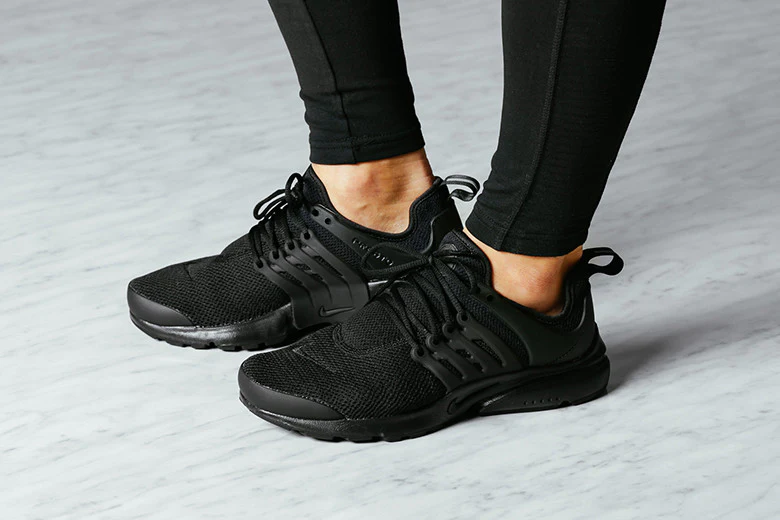
Characteristics of Proper Nursing Shoes
Comfort and Fit
When choosing nursing shoes, it’s essential to find a pair that provides optimal comfort and fit. Nurses spend long hours on their feet, so selecting the right shoes can greatly reduce fatigue and discomfort. Look for shoes with proper cushioning and arch support, as well as adequate space in the toe area to prevent blisters or pressure points.
- Opt for shoes with removable Ortholite or memory foam insoles for improved cushioning.
- Choose upper materials such as mesh or breathable synthetic fabrics for better airflow and reduced heat retention.
- Aim for shoes with adjustable features, like laces or Velcro straps, to ensure a precise fit.
Support and Stability
Support and stability play a crucial role in preventing injuries and maintaining a nurse’s overall health. Adequate arch support, heel cupping, and a stable platform can help distribute weight evenly and relieve pressure on the feet, knees, and back.
To assess a shoe’s support and stability, consider the following:
| Feature | Benefit |
|---|---|
| Arch support | Reduces strain on the arch and flattening of the foot. |
| Heel cupping | Provides added support and prevents heel pain and stress fractures. |
| Midsole cushioning | Absorbs impact and reduces pressure on joints. |
| Wide base | Offers increased balance and prevents foot roll. |
Slip Resistance and Protection
Nurses often encounter wet or slippery surfaces, making it vital to choose shoes with slip resistance and protection. A slip-resistant sole can prevent falls, while a well-protected toe area ensures safety from falling objects or accidental impacts.
When evaluating nursing shoes, consider these features:
- Select shoes with slip-resistant outsoles, preferably made of natural rubber or a non-slip synthetic material.
- Confirm the presence of toe protection, either in the form of a reinforced toe cap or a strong, impact-resistant upper material.
- Search for shoes that are fluid-resistant or feature a protective coating to minimize exposure to spills and stains.
By paying close attention to comfort and fit, support and stability, and slip resistance and protection, nurses can invest in a pair of footwear that improves their overall well-being and performance at work.
Ergonomics and Long-Term Foot Health
Preventing Foot Ailments
Nurses spend long hours on their feet, increasing the risk of developing foot ailments. It’s crucial to select shoes that provide adequate support, cushioning, and stability, minimizing strain on the feet. Some common foot ailments that can be prevented through proper footwear include:
- Plantar fasciitis: Inflammation of the plantar fascia, a ligament that runs along the bottom of the foot and supports the arch.
- Bunions: A bony bump that forms at the base of the big toe, causing misalignment and pain.
- Hammer toes: A deformity that causes the toes to bend or curl downward instead of pointing forward.
To prevent these ailments, consider the following factors while choosing nursing shoes:
- Fit: Ensure the shoe fits correctly, allowing ample space for toe movement and accommodating swelling during long shifts.
- Cushioning: Adequate cushioning helps absorb shock during walking and standing, reducing stress on the feet.
- Breathability: Opt for shoes made from breathable materials, preventing excessive sweating and odor.
Importance of Proper Arch Support
Proper arch support is crucial for long-term foot health, as it distributes body weight more evenly across the foot. This helps maintain the foot’s natural shape and alignment, preventing excessive stress on the joints and muscles.
| Foot Arch Type | Characteristics | Recommended Shoe Features |
|---|---|---|
| Flat Feet | Low or collapsed arches, prone to overpronation | Shoes with motion control and stability features |
| Normal Arch | Well-defined arches, neutral biomechanics | Shoes with moderate arch support and cushioning |
| High Arch | Prominent arches, supination or underpronation | Shoes with ample cushioning and support for shock absorption |
Determining the right arch support for your feet can be done by examining your footprints or consulting a podiatrist. Upgrading your nursing shoes with custom orthotic inserts can also provide personalized arch support and enhance overall foot comfort.
In conclusion, proper footwear is critical for nursing professionals to maintain ergonomic and long-term foot health. By prioritizing factors like support, cushioning, and fit, nurses can invest in shoes that promote foot health and ensure optimal performance during long shifts.
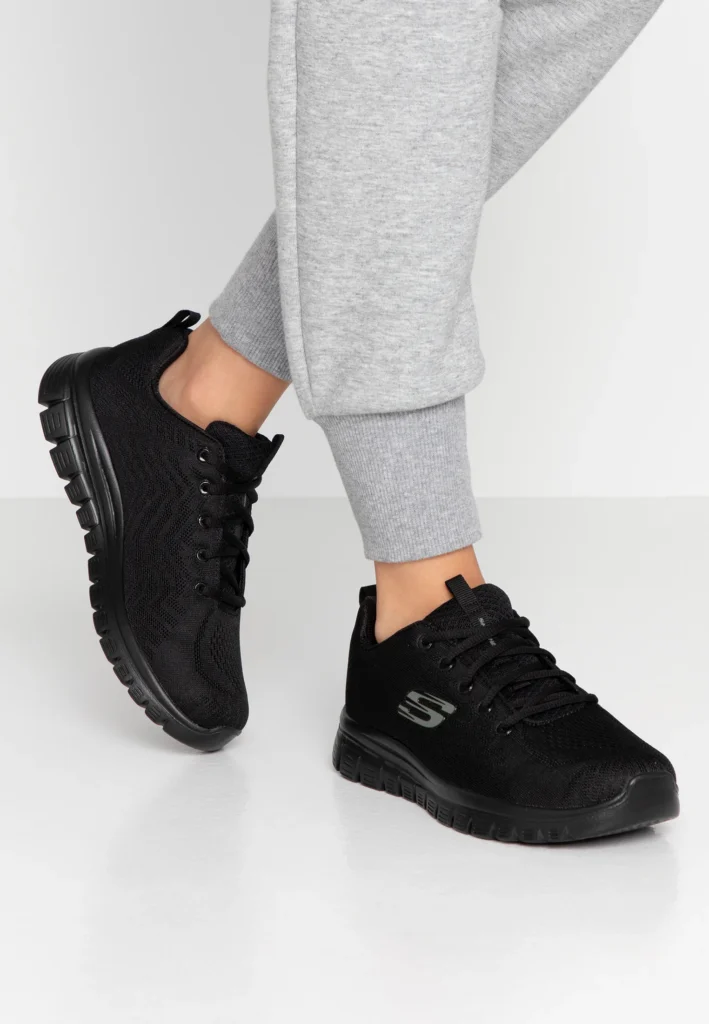
Selecting the Right Footwear
Materials and Design
When choosing footwear for nursing, it is essential to consider the materials and design. Quality materials, such as leather or synthetic materials that are breathable, can provide durability and comfort during long shifts.
- Look for slip-resistant soles made from rubber or other non-slip materials to prevent falls on wet or slippery floors.
- Find shoes with ample arch support and cushioning to alleviate pressure on the feet and joints, especially when standing for extended periods.
- Opt for lightweight designs to prevent foot fatigue.
- Ensure a secure fit with adjustable closures, such as laces or straps, to avoid loose or unstable shoes.
Hygiene Considerations
In the nursing profession, hygiene plays a crucial role in preventing the spread of infections. Therefore, it is necessary to consider the cleanliness and maintenance of footwear.
- Choose shoes with easy-to-clean surfaces, such as those made from synthetic or wipeable materials.
- Look for footwear with removable, washable insoles to maintain freshness and cleanliness.
- Consider investing in antimicrobial-treated shoes to help reduce the growth of bacteria, fungi, and odors.
- Avoid shoes with excessive grooves or hard-to-reach areas that may harbor germs.
By carefully selecting the appropriate materials, design, and hygiene features, healthcare professionals can ensure they are wearing the right footwear to support their needs and promote a healthy work environment.
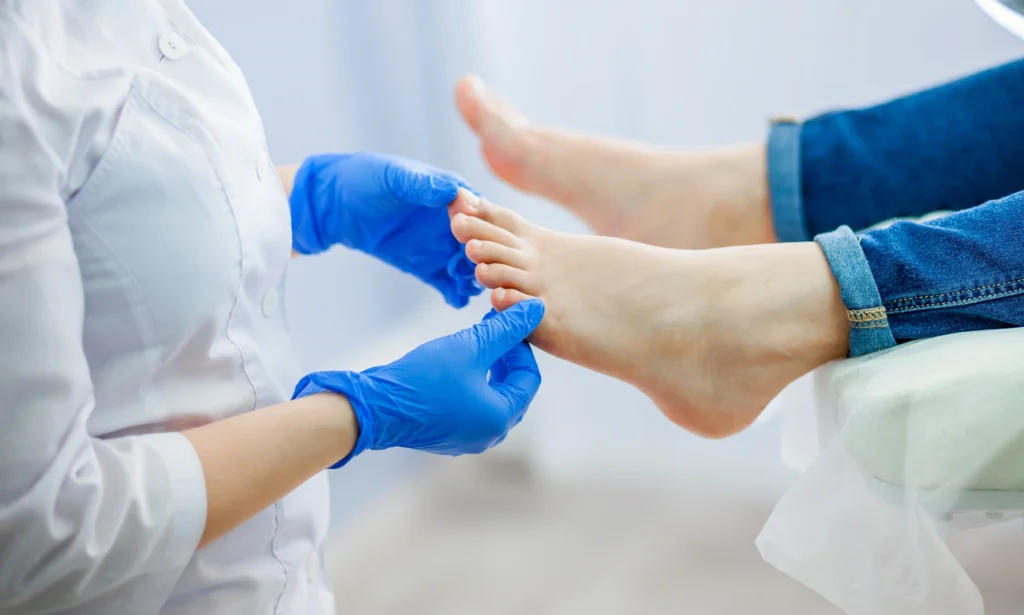
Regulatory Standards and Recommendations
When it comes to nursing footwear, adhering to regulatory standards and following professional recommendations is crucial for ensuring safety and comfort in the workplace. This section outlines the main standards and general guidelines that should be taken into consideration when selecting the appropriate shoes.
ANSI Standards
The American National Standards Institute (ANSI) provides various standards for safety footwear. Though these standards are not specifically tailored to nursing shoes, they can still offer valuable guidance. Some relevant ANSI standards include:
- ASTM F2412-18 – Standard Test Methods for Foot Protection
- ASTM F2413-18 – Standard Specification for Performance Requirements for Protective (Safety) Toe Cap Footwear
- ASTM F2892-18 – Standard Specification for Performance Requirements for Soft Toe Protective Footwear (Type I, Class 75 SD)
It is worthwhile for nursing professionals to consider these standards and ensure their chosen footwear meets the appropriate levels of safety and protection.
OSHA Guidelines
The Occupational Safety and Health Administration (OSHA) sets guidelines for personal protective equipment (PPE) in the workplace, including footwear. OSHA’s general guidelines emphasize the following aspects:
- Proper fit for the individual’s foot, including appropriate sizing and comfort
- Antislip soles to prevent accidents on slippery surfaces
- Adequate arch and heel support for extended periods of standing or walking
While OSHA does not provide specific regulations for nursing shoes, adhering to their guidelines can help select footwear that promotes a safe working environment.
Healthcare Facility Policies
Lastly, it is essential to consider the policies and guidelines provided by one’s healthcare facility. These policies can cover various factors such as:
- Color or style requirements to maintain a professional appearance
- Closed-toe shoes to protect against spills and dropped objects
- Materials that are easy to clean and maintain
By following the facility’s rules and understanding their rationale, the nursing professional can make an informed decision when selecting their footwear.
In conclusion, nursing professionals should prioritize their safety and comfort by adhering to a combination of ANSI standards, OSHA guidelines, and their healthcare facility’s policies. In doing so, they will set themselves up for success with the quality footwear that supports them throughout their demanding workday.


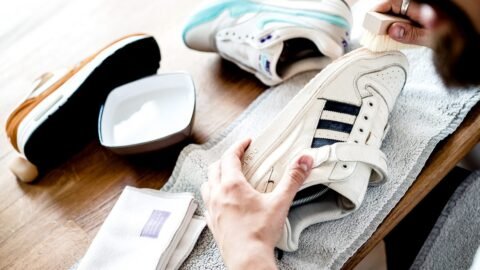

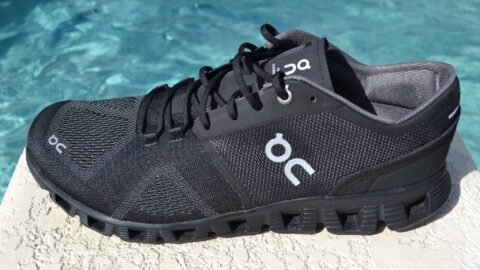



[…] Nurse shoes play a vital role in the comfort and well-being of healthcare professionals who spend long hours on their feet. The ideal nursing shoes provide proper support, cushioning, and slip resistance to help maintain good posture and prevent injury while attending to patients. […]
[…] Alegria provides a wide range of options that cater to the diverse needs of nurses. The importance of selecting proper footwear cannot be overstated, as the right shoes contribute to posture support, comfort, and […]
[…] that ensure maximum performance during long shifts. A nurse’s footwear should provide exceptional comfort, support, and durability, along with being easy to […]
[…] is not only a matter of comfort but a critical component of their occupational health. Proper shoes for nurses play a pivotal role […]
[…] system, often working long shifts that demand resilience not just mentally but physically. The right footwear is an essential tool for these healthcare heroes, directly impacting their comfort, […]
[…] the best footwear is very inportant for nurses who spend long hours on their feet. The right shoe can make a significant difference in comfort and support during long shifts. Crocs, known for […]
[…] the right nurse shoes is critical for managing back pain. Proper shoes can provide the support and stability necessary to reduce stress on the spine during long […]
[…] who spend long hours on their feet. The team at nursepenpal.com understand the importance of comfort, support, and durability in footwear as we have all been bedside RN before, which is why we know many nurses turn to […]
[…] spend countless hours on their feet, making the choice of footwear a crucial decision for comfort, support, and durability throughout long shifts. […]
[…] Touted for their durability and ease of maintenance, leather shoes provide the necessary support for nurses who spend long hours on their feet. The preference for white color in healthcare is […]
[…] are no strangers to the demands of long shifts on their feet, which makes the right footwear an essential tool of the trade. Breaking in new shoes can often lead to painful blisters and […]
[…] the choice of footwear a crucial decision for comfort, support, and durability. The right shoes can not only alleviate the strain of long shifts but also prevent long-term foot, knee, and […]
[…] Proper footwear is essential for nurses with flat feet as it provides: […]
[…] periods of standing and walking can have on the feet, it is essential to address the topic of proper footwear for these dedicated professionals. High-quality nursing shoes are not just about […]
[…] for men in the healthcare field. The long hours on their feet demand footwear that provides comfort, support, and durability. From hospitals to clinics, male nurses need shoes that can keep up with the pace of their […]
[…] healthcare professionals, the right pair of nursing shoes is a crucial component of the daily uniform. These shoes not only provide comfort during […]
[…] the right shoes is crucial for nurses, as they spend extended periods on their feet, often dealing with foot […]
[…] is a common condition among nurses due to the extensive time they spend on their feet. Appropriate footwear is essential for those with this condition to alleviate pain and prevent further injury. When […]
[…] often move across different surfaces, many times encountering spills. Therefore, shoes with high slip resistance are vital to prevent accidents. For instance, the ON Women’s Cloud […]
[…] often identify gaps in medical devices due to their hands-on experience in patient care. Inventing a new medical device involves […]